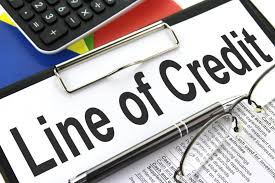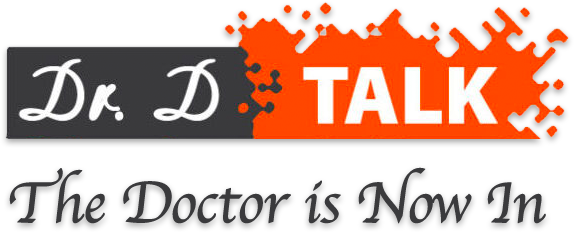
What Is a Line of Credit (LOC)?
Introduction to Lines of Credit
Are you looking for flexible financing options that can help you manage unexpected expenses or fund your next big project? Look no further than a Line of Credit (LOC)! This versatile financial tool offers quick access to funds whenever you need them, providing the freedom and peace of mind to navigate life’s financial twists and turns with ease. Let’s dive into the world of lines of credit and discover how they can benefit you!
Types of Lines of Credit
When it comes to lines of credit, there are various types available to suit different needs. One common type is a personal line of credit, which can provide flexibility for individuals who may need access to funds for various purposes. Business lines of credit are designed specifically for companies looking to manage cash flow or cover unexpected expenses.
Another type is a home equity line of credit (HELOC), which allows homeowners to borrow against the equity in their homes. This can be useful for renovations, debt consolidation, or other large expenses. Additionally, there are secured and unsecured lines of credit – secured lines require collateral while unsecured ones do not.
Moreover, some financial institutions offer overdraft protection as a form of line of credit linked to checking accounts. This can help prevent declined transactions due to insufficient funds in the account. Understanding the different types of lines of credit available can help individuals and businesses make informed decisions about their borrowing options without unnecessary stress or confusion.
Benefits and Drawbacks of LOCs
Lines of Credit (LOCs) offer flexibility when it comes to borrowing money. One key benefit is that you can access funds up to a predetermined limit, allowing for financial security during unforeseen expenses or opportunities. Another advantage is the ability to pay interest only on the amount borrowed, rather than the entire credit line. This can be a cost-effective option compared to traditional loans.
However, one drawback of LOCs is that they often come with variable interest rates, meaning your payments could fluctuate based on market conditions. Additionally, failing to make timely payments or exceeding your credit limit can result in penalties and damage your credit score.
Despite these drawbacks, many individuals and businesses find LOCs valuable for managing cash flow and covering short-term needs efficiently. It’s essential to weigh the pros and cons carefully before opting for a line of credit that suits your financial goals and circumstances.
How to Use a Line of Credit
When it comes to using a line of credit (LOC), understanding how to utilize this financial tool effectively can make all the difference in managing your finances.
It’s crucial to have a clear purpose for accessing the LOC. Whether it’s for unexpected expenses, home renovations, or business investments, having a specific plan will help you make informed decisions.
Once you’ve secured a line of credit, only draw from it when necessary and be mindful of your spending. It’s tempting to use the available funds for non-essential purchases but remember that this is borrowed money that needs to be repaid.
Monitoring your balance regularly is essential to avoid exceeding your limit and incurring additional fees or penalties. Keeping track of your spending habits will also help you stay within budget and manage your repayment schedule effectively.
Using a line of credit responsibly can provide flexibility and convenience in times of need while helping you build a positive credit history if managed wisely.
Common Uses for LOCs
One common use for lines of credit (LOCs) is to cover unexpected expenses that may arise in your personal or business life. Instead of dipping into savings or using high-interest credit cards, having a LOC can provide a convenient safety net.
Another popular way people utilize LOCs is for home renovations or repairs. Whether you’re looking to spruce up your living space or tackle a major project, having access to a line of credit can help finance these endeavors without draining your bank account all at once.
Business owners often turn to LOCs to manage cash flow fluctuations and cover operational costs during slow periods. This flexibility can be crucial in ensuring the smooth operation and growth of a small business without relying on traditional loans with fixed terms.
Furthermore, some individuals use their lines of credit for education expenses, such as tuition fees or ongoing professional development courses. Having access to funds when needed can alleviate the financial burden associated with investing in personal growth and skill enhancement.
Alternatives to LOCs
If a line of credit (LOC) isn’t the right fit for your financial needs, there are several alternatives worth exploring. One option is a personal loan, which provides a lump sum of money upfront that you repay in fixed installments over time. Personal loans often have lower interest rates compared to some LOCs.
Another alternative is a home equity loan or home equity line of credit (HELOC), where you use the equity in your home as collateral to borrow funds at a typically lower interest rate. However, keep in mind that using your home as collateral comes with risks if you’re unable to make payments.
Credit cards offer another way to access funds on an as-needed basis. While they may have higher interest rates than other options, they can be convenient for smaller purchases and emergencies. Peer-to-peer lending platforms are also gaining popularity as an alternative borrowing option outside traditional financial institutions.
Exploring these alternatives can help you find the best financing solution based on your specific circumstances and needs without solely relying on a LOC.
Conclusion
A line of credit can be a valuable financial tool when used wisely. It offers flexibility and quick access to funds when needed, making it a popular choice for many individuals and businesses. However, it’s essential to understand the terms and conditions of the LOC agreement to avoid falling into debt traps. By weighing the benefits and drawbacks, exploring alternative options, and using a line of credit responsibly, you can make informed decisions that align with your financial goals. Remember that proper financial management is key to maximizing the benefits of any borrowing option like a line of credit.

